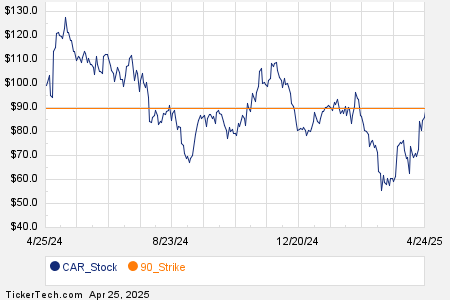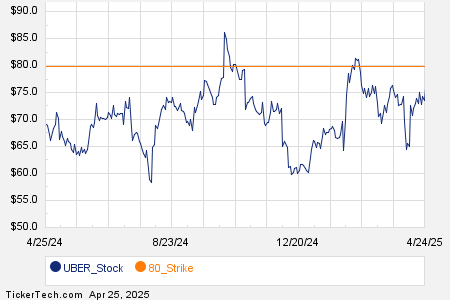Disney’s Streaming Surge: A Potential Game-Changer in Valuation
Disney (NYSE:DIS) reported its Q4 results, revealing strong growth in its streaming business that is starting to counterbalance challenges faced in theme parks and cable TV. Nevertheless, Netflix (NASDAQ:NFLX) remains the dominant player in the streaming arena. Netflix shares have surged nearly 90% this year, outpacing Disney’s stock rise of 29%. With a market cap reaching $390 billion, Netflix is valued almost double Disney’s $200 billion. Interestingly, Disney’s direct-to-consumer (DTC) revenue was approximately $23 billion over the fiscal year ending September 2024, quite close to Netflix’s projected $39 billion in streaming revenue for the current fiscal year. This suggests that Disney’s market value may not fully reflect its streaming capabilities. Could Disney’s streaming division propel its stock price to double in the coming years? We think it’s a distinct possibility. Here’s our analysis.
Positive Trends in Disney’s Streaming Revenue
Disney’s streaming revenue grew around 14% year-over-year, reaching about $23 billion in FY’24. If this growth continues at a projected 12% annually for the next two years, revenue could hit around $28.6 billion by FY’26. By enhancing its streaming operating margins from about 5% to an estimated 25%, Disney could generate roughly $7.1 billion in operating earnings. Given that Netflix operates at about a 30% margin, this improvement seems achievable. Currently, Netflix trades at approximately 39 times its projected 2024 operating income. If investors were to assign Disney’s streaming business a valuation of about 30 times operating earnings—which is about 25% lower than Netflix—it could assign an enterprise value of close to $210 billion to Disney’s streaming division, nearly matching its current market cap. With additional revenue streams from theme parks, television, and sports entertainment, which collectively contributed $67 billion last year, it becomes easier to envision Disney stock potentially doubling.
DIS Stock Struggles Compared to the Market
In the past three years, DIS stock has underperformed the broader market, with returns of -15% in 2021, -44% in 2022, and 4% in 2023. In contrast, the Trefis High Quality (HQ) Portfolio, which includes 30 stocks, has provided more stable returns, outperforming the S&P 500 each year. This highlights the relative challenges that Disney stock has faced.
Steady Growth in Disney’s Streaming Operations
Disney has made significant investments in its streaming services, and the returns are becoming evident. In the last quarter, the direct-to-consumer segment generated $5.8 billion in revenue, marking a 15% increase year-over-year, while operating profits surged to $321 million, up from a $387 million loss during the same period last year. Disney+ alone gained 4.4 million subscribers last quarter (excluding Disney+ Hotstar), bringing the total to about 123 million—up 9% from last year. Hulu also grew, reaching approximately 52 million subscribers, a 7% increase. Disney’s strategy of raising prices has supported these gains; for instance, Disney+ adopted a $2 price increase for its ad-free plan to $16 in October, following a similar move in 2023.
Emerging Trends in Disney’s Ad-Supported Streaming
Disney’s ad-supported tier is witnessing substantial adoption, with around half of U.S. Disney+ subscribers opting for this option. About 37% of active subscribers have chosen ad-supported plans, which Disney has actively promoted by raising prices on ad-free subscriptions. This approach aligns with an industry trend where ad-supported tiers yield higher revenue from both subscriptions and advertising campaigns. Additionally, Disney’s strong family-friendly content positions it well in this advertising model.
Disney vs. Netflix: A Comparison of Subscriber Growth
While Netflix still leads in streaming subscribers, claiming 283 million globally (up 14% year-over-year), Disney trails with a total of about 175 million subscribers across Hulu and Disney+, growing at 8% from last year. Netflix enjoys a more favorable average revenue per user (ARPU) at $11.60 globally, compared to Disney+’s $7.30, though Hulu brings in higher ARPU at approximately $12.50. Despite some attractive aspects of Disney stock, many analysts believe Netflix poses too much risk at its current valuation of $900.
Future Growth Prospects for Disney’s Streaming Business
Even with Netflix’s stronger momentum, Disney’s extensive intellectual property library—including franchises like Marvel and Star Wars—offers considerable growth potential. To narrow the valuation gap, Disney must focus on improving streaming margins and subscriber rates. The company recently introduced a paid sharing feature, allowing U.S. users to add accounts outside their households for an extra monthly fee, which has already shown to boost user engagement for Netflix. Disney could see similar positive impacts from this initiative.
Moreover, as Disney’s streaming platform matures, its marketing costs are expected to conform to trends seen in other established services, while bundled offerings of Disney+, Hulu, and ESPN+ will likely enhance customer retention. Unlike Netflix, Disney also benefits from its other revenue-generating avenues like theatrical releases and merchandising, suggesting that investments in content might yield more long-term benefits. For detailed insights on Disney’s valuation and revenue, explore our analysis of Disney’s Valuation and Disney Revenue.
| Returns | Nov 2024 MTD [1] |
2024 YTD [1] |
2017-24 Total [2] |
| DIS Return | 20% | 29% | 17% |
| S&P 500 Return | 4% | 25% | 166% |
| Trefis Reinforced Value Portfolio | 8% | 24% | 818% |
[1] Returns as of 11/25/2024
[2] Cumulative total returns since the end of 2016
Invest with Trefis Market-Beating Portfolios
See all Trefis Price Estimates
The views and opinions expressed herein are the views and opinions of the author and do not necessarily reflect those of Nasdaq, Inc.


